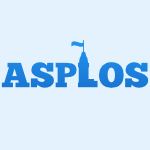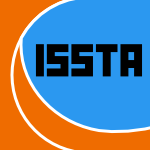53 papers:
 SAC-2015-ZhangYLC #concept #debugging #mining #predict #repository
SAC-2015-ZhangYLC #concept #debugging #mining #predict #repository- Predicting severity of bug report by mining bug repository with concept profile (TZ, GY, BL, ATSC), pp. 1553–1558.
 PPoPP-2015-TallentVDDKH
PPoPP-2015-TallentVDDKH- Diagnosing the causes and severity of one-sided message contention (NRT, AV, HvD, JD, DJK, AH), pp. 130–139.
 ICPR-2014-WuTS #3d #learning #rank
ICPR-2014-WuTS #3d #learning #rank- Learning to Rank the Severity of Unrepaired Cleft Lip Nasal Deformity on 3D Mesh Data (JW, RT, LGS), pp. 460–464.
 SAC-2014-PedrosaP #using
SAC-2014-PedrosaP #using- Text entry using a foot for severely motor-impaired individuals (DdCP, MdGCP), pp. 957–963.
 CASE-2013-ChenZS #metric #using
CASE-2013-ChenZS #metric #using- A severity measurement system for obstructive sleep apnea discrimination using a single ECG signal (LC, XZ, CS), pp. 1–6.
 WCRE-2012-TianLS #classification #debugging #fine-grained #information retrieval #nearest neighbour #predict
WCRE-2012-TianLS #classification #debugging #fine-grained #information retrieval #nearest neighbour #predict- Information Retrieval Based Nearest Neighbor Classification for Fine-Grained Bug Severity Prediction (YT, DL, CS), pp. 215–224.
 CIKM-2012-GangadharaiahC #named
CIKM-2012-GangadharaiahC #named- PriSM: discovering and prioritizing severe technical issues from product discussion forums (RG, RC), pp. 1627–1631.
 MLDM-2012-KalpakisYHMSSS #analysis #permutation #predict #using
MLDM-2012-KalpakisYHMSSS #analysis #permutation #predict #using- Outcome Prediction for Patients with Severe Traumatic Brain Injury Using Permutation Entropy Analysis of Electronic Vital Signs Data (KK, SY, PFMH, CFM, LGS, DMS, TMS), pp. 415–426.
 CBSE-2011-SaudraisC #automation #component
CBSE-2011-SaudraisC #automation #component- Automatic relocation of AUTOSAR components among several ECUs (SS, KC), pp. 199–204.
 DRR-2011-ChenCL #constraints #identification #using
DRR-2011-ChenCL #constraints #identification #using- Using perturbed handwriting to support writer identification in the presence of severe data constraints (JC, WC, DPL), pp. 1–10.
 ICDAR-2011-PanZSN #invariant #using
ICDAR-2011-PanZSN #invariant #using- Recognizing Characters with Severe Perspective Distortion Using Hash Tables and Perspective Invariants (PP, YZ, JS, SN), pp. 548–552.
 CSMR-2011-LamkanfiDSV #algorithm #debugging #mining #predict
CSMR-2011-LamkanfiDSV #algorithm #debugging #mining #predict- Comparing Mining Algorithms for Predicting the Severity of a Reported Bug (AL, SD, QDS, TV), pp. 249–258.
 SAC-2011-Fournier-VigerNT #mining #named #sequence
SAC-2011-Fournier-VigerNT #mining #named #sequence- RuleGrowth: mining sequential rules common to several sequences by pattern-growth (PFV, RN, VSMT), pp. 956–961.
 CSL-2011-Kieronski #decidability #linear #logic #order
CSL-2011-Kieronski #decidability #linear #logic #order- Decidability Issues for Two-Variable Logics with Several Linear Orders (EK), pp. 337–351.
 MSR-2010-LamkanfiDGG #debugging #predict
MSR-2010-LamkanfiDGG #debugging #predict- Predicting the severity of a reported bug (AL, SD, EG, BG), pp. 1–10.
 ICPR-2010-AlvaroS #recognition
ICPR-2010-AlvaroS #recognition- Comparing Several Techniques for Offline Recognition of Printed Mathematical Symbols (FA, JAS), pp. 1953–1956.
 ASPLOS-2010-ZhangSL #approach #concurrent #debugging #detection #named
ASPLOS-2010-ZhangSL #approach #concurrent #debugging #detection #named- ConMem: detecting severe concurrency bugs through an effect-oriented approach (WZ, CS, SL), pp. 179–192.
 ISSTA-2010-DobolyiW #fault #modelling #testing #web
ISSTA-2010-DobolyiW #fault #modelling #testing #web- Modeling consumer-perceived web application fault severities for testing (KD, WW), pp. 97–106.
 ICDAR-2009-ZhouLT #recognition
ICDAR-2009-ZhouLT #recognition- Character Recognition under Severe Perspective Distortion (PZ, LL, CLT), pp. 676–680.
 CHI-2009-Hornof #design
CHI-2009-Hornof #design- Designing with children with severe motor impairments (AJH), pp. 2177–2180.
 ICML-2009-TrespY #dependence #learning #summary #tutorial
ICML-2009-TrespY #dependence #learning #summary #tutorial- Tutorial summary: Learning with dependencies between several response variables (VT, KY), p. 14.
 ICMT-2009-Garcia-MagarinoGF #algorithm #generative #model transformation
ICMT-2009-Garcia-MagarinoGF #algorithm #generative #model transformation- Model Transformation By-Example: An Algorithm for Generating Many-to-Many Transformation Rules in Several Model Transformation Languages (IGM, JJGS, RFF), pp. 52–66.
 CASE-2008-PatilS #adaptation #nondeterminism
CASE-2008-PatilS #adaptation #nondeterminism- Adapting product and supply chain systems under severe uncertainty (LP, KS), pp. 285–290.
 ICSM-2008-MenziesM #assessment #automation #fault
ICSM-2008-MenziesM #assessment #automation #fault- Automated severity assessment of software defect reports (TM, AM), pp. 346–355.
 ICPR-2008-ChenTZ #classification #novel
ICPR-2008-ChenTZ #classification #novel- Spam filtering with several novel bayesian classifiers (CC, YT, CZ), pp. 1–4.
 ICPR-2008-LiT08a #recognition
ICPR-2008-LiT08a #recognition- Character recognition under severe perspective distortion (LL, CLT), pp. 1–4.
 ICPR-2008-MerchanOS #identification #image
ICPR-2008-MerchanOS #identification #image- Identification and pose under severe occlusion in range images (PM, AAO, SS), pp. 1–4.
 ICDAR-2007-ChenW #documentation #image #kernel
ICDAR-2007-ChenW #documentation #image #kernel- Exploiting Fisher Kernels in Decoding Severely Noisy Document Images (JC, YW), pp. 417–421.
 CHI-2005-BlackmonKP #effectiveness #navigation #predict #problem
CHI-2005-BlackmonKP #effectiveness #navigation #predict #problem- Tool for accurately predicting website navigation problems, non-problems, problem severity, and effectiveness of repairs (MHB, MK, PGP), pp. 31–40.
 CHI-2005-HornofC #named
CHI-2005-HornofC #named- EyeDraw: enabling children with severe motor impairments to draw with their eyes (AJH, AC), pp. 161–170.
 RE-2004-KaiyaOK #case study #diagrams #identification
RE-2004-KaiyaOK #case study #diagrams #identification- Identifying Stakeholders and Their Preferences about NFR by Comparing Use Case Diagrams of Several Existing Systems (HK, AO, KK), pp. 112–121.
 SAC-2004-Calderon-BenavidesGAGD #algorithm #collaboration #comparison #multi #predict
SAC-2004-Calderon-BenavidesGAGD #algorithm #collaboration #comparison #multi #predict- A comparison of several predictive algorithms for collaborative filtering on multi-valued ratings (MLCB, CNGC, JdJPA, JCGD, JD), pp. 1033–1039.
 SAC-2004-SheldonJ #embedded #reliability
SAC-2004-SheldonJ #embedded #reliability- Assessing the effect of failure severity, coincident failures and usage-profiles on the reliability of embedded control systems (FTS, KJ), pp. 826–833.
 ICDAR-2003-SarkarBZ #image
ICDAR-2003-SarkarBZ #image- Training on Severely Degraded Text-Line Images (PS, HSB, XZ), pp. 38–43.
 ICPR-v3-2002-GeH #case study #comparative #modelling #recognition #scalability
ICPR-v3-2002-GeH #case study #comparative #modelling #recognition #scalability- A Comparative Study of Several Modeling Approaches for Large Vocabulary Offline Recognition of Handwritten Chinese Characters (YG, QH), pp. 85–88.
 ICPR-v3-2002-ZhouZ #algorithm #recognition
ICPR-v3-2002-ZhouZ #algorithm #recognition- Face Recognition by Combining Several Algorithms (JZ, DZ), p. 497–?.
 SIGIR-2002-KeskustaloHA #framework #query
SIGIR-2002-KeskustaloHA #framework #query- UTACLIR -: general query translation framework for several language pairs (HK, TH, EA), p. 448.
 TOOLS-USA-2002-MiliMS #aspect-oriented #functional #named
TOOLS-USA-2002-MiliMS #aspect-oriented #functional #named- CorbaViews: Distributing objects that support several functional aspects (HM, HM, SS), pp. 207–229.
 ICSE-2001-ElbaumMR #fault #testing
ICSE-2001-ElbaumMR #fault #testing- Incorporating Varying Test Costs and Fault Severities into Test Case Prioritization (SGE, AGM, GR), pp. 329–338.
 ICLP-2001-Colmerauer #approximate #constraints #multi
ICLP-2001-Colmerauer #approximate #constraints #multi- Solving the Multiplication Constraint in Several Approximation Spaces (AC), p. 1.
 UML-2000-DammHTT #strict #uml
UML-2000-DammHTT #strict #uml- Supporting Several Levels of Restriction in the UML (CHD, KMH, MT, MT), pp. 396–409.
 HCI-CCAD-1999-BarretoSA #human-computer #interface
HCI-CCAD-1999-BarretoSA #human-computer #interface- Hands-off human-computer interfaces for individuals with severe motor disabilities (AB, SS, MA), pp. 970–974.
 IWPC-1998-DetienneBW #comprehension #object-oriented #programming
IWPC-1998-DetienneBW #comprehension #object-oriented #programming- The Effect of Object-Oriented Programming Expertise in Several Dimensions of Comprehension Strategies (FD, JMB, SW), pp. 82–89.
 ALP-PLILP-1998-SmausHK #logic programming #source code #termination
ALP-PLILP-1998-SmausHK #logic programming #source code #termination- Termination of Logic Programs with block Declarations Running in Several Modes (JGS, PMH, AK), pp. 73–88.
 ASPLOS-1998-JacobM #memory management
ASPLOS-1998-JacobM #memory management- A Look at Several Memory Management Units, TLB-Refill Mechanisms, and Page Table Organizations (BLJ, TNM), pp. 295–306.
 ICDAR-1997-ChungY #comparison #feature model #performance #recognition
ICDAR-1997-ChungY #comparison #feature model #performance #recognition- Performance comparison of several feature selection methods based on node pruning in handwritten character recognition (KC, JY), pp. 11–15.
 ICDAR-v1-1995-SabourinG #approach #classification #evaluation #multi #verification
ICDAR-v1-1995-SabourinG #approach #classification #evaluation #multi #verification- An extended-shadow-code based approach for off-line signature verification. II. Evaluation of several multi-classifier combination strategies (RS, GG), pp. 197–201.
 ICML-1995-Littlestone #algorithm #learning
ICML-1995-Littlestone #algorithm #learning- Comparing Several Linear-threshold Learning Algorithms on Tasks Involving Superfluous Attributes (NL), pp. 353–361.
 ICDAR-1993-OhkuraSSH #on the #using
ICDAR-1993-OhkuraSSH #on the #using- On discrimination of handwritten similar KANJI characters by subspace method using several features (MO, YS, MS, RH), pp. 589–592.
 HCI-ACS-1993-Westlander #health #research
HCI-ACS-1993-Westlander #health #research- The Simultaneous Attack on Several Work Environment Factors — An Organizational Change Project Inspired of Occupational Health Research Findings (GW), pp. 833–838.
 HCI-SHI-1993-BorgesBLT #design #education #framework #knowledge base #using
HCI-SHI-1993-BorgesBLT #design #education #framework #knowledge base #using- A Framework for Building a Knowledge Based System Using Several Experts — With an Application for Curriculum Design of Engineering Degree Courses (MNB, YB, ML, MTT), pp. 344–349.
 INTERCHI-1993-AlmTEN #people
INTERCHI-1993-AlmTEN #people- Computer aided conversation for severely physically impaired non-speaking people (NA, JT, LE, AFN), pp. 236–241.
 VDME-1991-1-Goldschlag #formal method
VDME-1991-1-Goldschlag #formal method- A Mechanical Formalization of Several Fairness Notions (DMG), pp. 125–148.
 SAC-2015-ZhangYLC #concept #debugging #mining #predict #repository
SAC-2015-ZhangYLC #concept #debugging #mining #predict #repository PPoPP-2015-TallentVDDKH
PPoPP-2015-TallentVDDKH ICPR-2014-WuTS #3d #learning #rank
ICPR-2014-WuTS #3d #learning #rank SAC-2014-PedrosaP #using
SAC-2014-PedrosaP #using CASE-2013-ChenZS #metric #using
CASE-2013-ChenZS #metric #using WCRE-2012-TianLS #classification #debugging #fine-grained #information retrieval #nearest neighbour #predict
WCRE-2012-TianLS #classification #debugging #fine-grained #information retrieval #nearest neighbour #predict CIKM-2012-GangadharaiahC #named
CIKM-2012-GangadharaiahC #named MLDM-2012-KalpakisYHMSSS #analysis #permutation #predict #using
MLDM-2012-KalpakisYHMSSS #analysis #permutation #predict #using CBSE-2011-SaudraisC #automation #component
CBSE-2011-SaudraisC #automation #component DRR-2011-ChenCL #constraints #identification #using
DRR-2011-ChenCL #constraints #identification #using ICDAR-2011-PanZSN #invariant #using
ICDAR-2011-PanZSN #invariant #using CSMR-2011-LamkanfiDSV #algorithm #debugging #mining #predict
CSMR-2011-LamkanfiDSV #algorithm #debugging #mining #predict SAC-2011-Fournier-VigerNT #mining #named #sequence
SAC-2011-Fournier-VigerNT #mining #named #sequence CSL-2011-Kieronski #decidability #linear #logic #order
CSL-2011-Kieronski #decidability #linear #logic #order MSR-2010-LamkanfiDGG #debugging #predict
MSR-2010-LamkanfiDGG #debugging #predict ICPR-2010-AlvaroS #recognition
ICPR-2010-AlvaroS #recognition ASPLOS-2010-ZhangSL #approach #concurrent #debugging #detection #named
ASPLOS-2010-ZhangSL #approach #concurrent #debugging #detection #named ISSTA-2010-DobolyiW #fault #modelling #testing #web
ISSTA-2010-DobolyiW #fault #modelling #testing #web ICDAR-2009-ZhouLT #recognition
ICDAR-2009-ZhouLT #recognition CHI-2009-Hornof #design
CHI-2009-Hornof #design ICML-2009-TrespY #dependence #learning #summary #tutorial
ICML-2009-TrespY #dependence #learning #summary #tutorial ICMT-2009-Garcia-MagarinoGF #algorithm #generative #model transformation
ICMT-2009-Garcia-MagarinoGF #algorithm #generative #model transformation CASE-2008-PatilS #adaptation #nondeterminism
CASE-2008-PatilS #adaptation #nondeterminism ICSM-2008-MenziesM #assessment #automation #fault
ICSM-2008-MenziesM #assessment #automation #fault ICPR-2008-ChenTZ #classification #novel
ICPR-2008-ChenTZ #classification #novel ICPR-2008-LiT08a #recognition
ICPR-2008-LiT08a #recognition ICPR-2008-MerchanOS #identification #image
ICPR-2008-MerchanOS #identification #image ICDAR-2007-ChenW #documentation #image #kernel
ICDAR-2007-ChenW #documentation #image #kernel CHI-2005-BlackmonKP #effectiveness #navigation #predict #problem
CHI-2005-BlackmonKP #effectiveness #navigation #predict #problem CHI-2005-HornofC #named
CHI-2005-HornofC #named RE-2004-KaiyaOK #case study #diagrams #identification
RE-2004-KaiyaOK #case study #diagrams #identification SAC-2004-Calderon-BenavidesGAGD #algorithm #collaboration #comparison #multi #predict
SAC-2004-Calderon-BenavidesGAGD #algorithm #collaboration #comparison #multi #predict SAC-2004-SheldonJ #embedded #reliability
SAC-2004-SheldonJ #embedded #reliability ICDAR-2003-SarkarBZ #image
ICDAR-2003-SarkarBZ #image ICPR-v3-2002-GeH #case study #comparative #modelling #recognition #scalability
ICPR-v3-2002-GeH #case study #comparative #modelling #recognition #scalability ICPR-v3-2002-ZhouZ #algorithm #recognition
ICPR-v3-2002-ZhouZ #algorithm #recognition SIGIR-2002-KeskustaloHA #framework #query
SIGIR-2002-KeskustaloHA #framework #query TOOLS-USA-2002-MiliMS #aspect-oriented #functional #named
TOOLS-USA-2002-MiliMS #aspect-oriented #functional #named ICSE-2001-ElbaumMR #fault #testing
ICSE-2001-ElbaumMR #fault #testing ICLP-2001-Colmerauer #approximate #constraints #multi
ICLP-2001-Colmerauer #approximate #constraints #multi UML-2000-DammHTT #strict #uml
UML-2000-DammHTT #strict #uml HCI-CCAD-1999-BarretoSA #human-computer #interface
HCI-CCAD-1999-BarretoSA #human-computer #interface IWPC-1998-DetienneBW #comprehension #object-oriented #programming
IWPC-1998-DetienneBW #comprehension #object-oriented #programming ALP-PLILP-1998-SmausHK #logic programming #source code #termination
ALP-PLILP-1998-SmausHK #logic programming #source code #termination ASPLOS-1998-JacobM #memory management
ASPLOS-1998-JacobM #memory management ICDAR-1997-ChungY #comparison #feature model #performance #recognition
ICDAR-1997-ChungY #comparison #feature model #performance #recognition ICDAR-v1-1995-SabourinG #approach #classification #evaluation #multi #verification
ICDAR-v1-1995-SabourinG #approach #classification #evaluation #multi #verification ICML-1995-Littlestone #algorithm #learning
ICML-1995-Littlestone #algorithm #learning ICDAR-1993-OhkuraSSH #on the #using
ICDAR-1993-OhkuraSSH #on the #using HCI-ACS-1993-Westlander #health #research
HCI-ACS-1993-Westlander #health #research HCI-SHI-1993-BorgesBLT #design #education #framework #knowledge base #using
HCI-SHI-1993-BorgesBLT #design #education #framework #knowledge base #using INTERCHI-1993-AlmTEN #people
INTERCHI-1993-AlmTEN #people VDME-1991-1-Goldschlag #formal method
VDME-1991-1-Goldschlag #formal method









